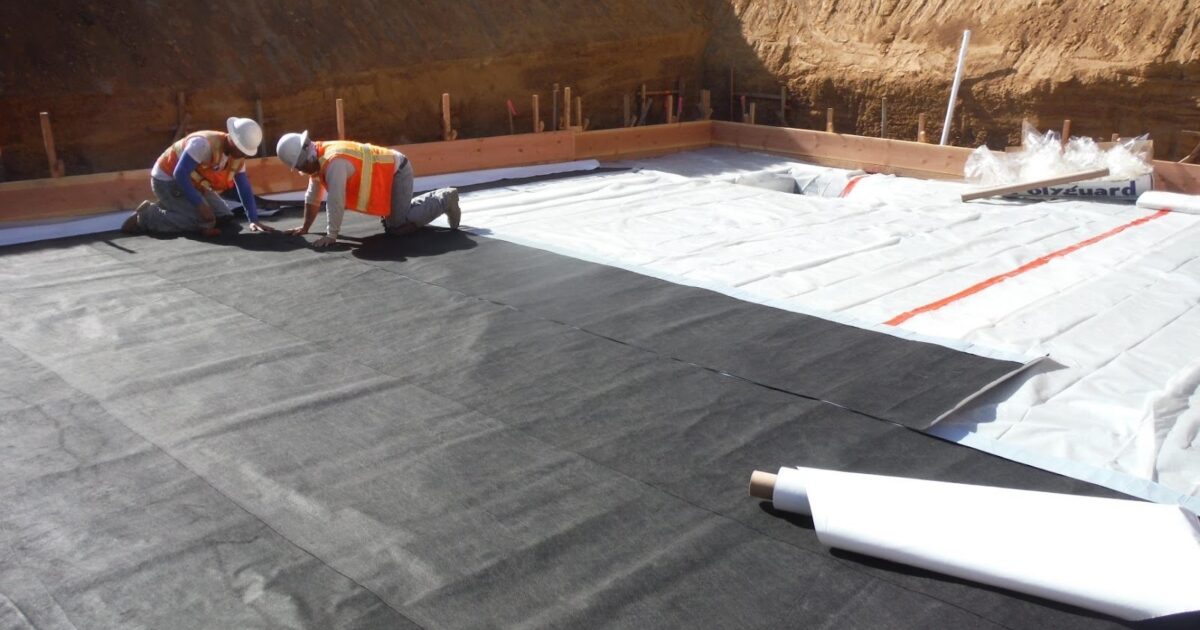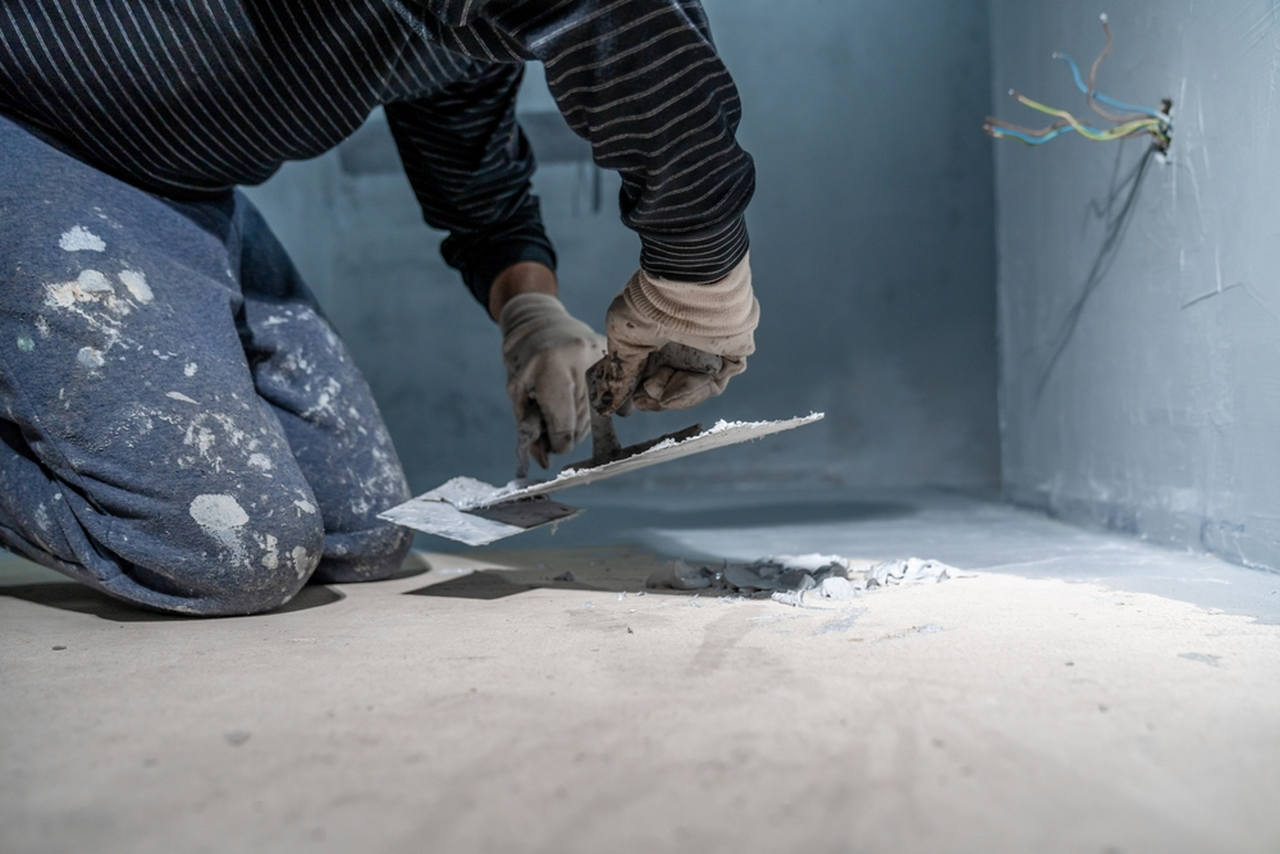Basement waterproofing Omaha: Insider Tips for Maximum Protection
Exactly How Waterproofing Works: A Comprehensive Check Out Methods and Technologies
Waterproofing is necessary for shielding frameworks from moisture-related damages. It includes different strategies and technologies that develop barriers versus water invasion. Conventional techniques, such as compressed clay, coexist with modern-day technologies like liquid-applied membrane layers. Comprehending the subtleties of these techniques is important for effective application. Nonetheless, the efficiency of any waterproofing remedy hinges not only on the strategies used yet likewise on continuous maintenance and evaluation. What are the crucial aspects that influence lasting performance?
Comprehending the Basics of Waterproofing
Waterproofing is an essential procedure that shields frameworks from water invasion, which can result in considerable damage gradually. This technique entails the application of various materials and techniques designed to produce an obstacle against moisture. The main goal is to stop water from permeating surfaces, which can trigger deterioration, mold and mildew growth, and architectural instability.Various factors influence the option of waterproofing approach, including the sort of framework, its location, and ecological problems. Recognizing the physics of water motion and the buildings of different products is essential in picking a reliable waterproofing solution.Effective waterproofing not only safeguards structures but additionally improves their longevity and stability. Usually, it is incorporated into the style phase of construction to assure thorough defense. As understanding of water-related concerns expands, the importance of comprehending waterproofing principles comes to be progressively clear to designers, home builders, and residential or commercial property owners alike.
Conventional Waterproofing Approaches
Standard waterproofing approaches have actually been made use of for centuries, depending on tried and true methods and materials to protect structures from water damages. Among the oldest methods entails using clay, which, when compacted, produces a natural barrier versus wetness. Additionally, asphalt, a sticky, black product stemmed from petroleum, has actually been employed for its waterproof properties, usually put on roofs and foundations.Another technique entails the application of lime-based plasters, which provide a breathable layer that enables dampness to escape while protecting against water access. Thatch roof, a conventional method still seen in some cultures, offers superb waterproofing because of its firmly loaded straw layers.Moreover, the use of rock and brick has actually projected, as these products are inherently immune to water when effectively mounted. On the whole, typical waterproofing approaches emphasize the value of selecting proper products and building techniques to improve resilience versus water breach.
Modern Waterproofing Technologies
Developments in modern waterproofing innovations have actually transformed the method frameworks are shielded from water damage. Cutting-edge methods such as liquid-applied membranes and innovative sealants have enhanced the performance and versatility of waterproofing services. These innovations permit for smooth application, reducing the danger of leaks and guaranteeing complete insurance coverage over intricate surfaces.Moreover, the integration of smart innovations, such as wetness sensors and automated tracking systems, allows real-time evaluation of waterproofing efficiency. This aggressive strategy promotes prompt upkeep and minimizes lasting repair costs.Additionally, advancements in spray-applied coverings provide quick application and excellent bond, adapting to various substratums while supplying robust security. Methods like polymer-modified systems even more improve flexibility and resilience, making them suitable for varied settings. Generally, contemporary waterproofing technologies not just alleviate water intrusion but additionally add to the durability and sustainability of frameworks, marking a substantial change in the industry.
Products Utilized in Waterproofing
The effectiveness of waterproofing remedies heavily counts on the materials made use of in their application. Various products are employed to produce barriers versus water ingress, each with one-of-a-kind residential or commercial properties matched for different atmospheres. Typically made use of materials consist of membranes, finishes, and sealants.Liquid-applied membrane layers, frequently made from polyurethane or acrylic, create a seamless barrier that adjusts to complex surface areas. Sheet membranes, normally constructed from rubber or polycarbonate, deal toughness and are perfect for larger locations. Additionally, cementitious waterproofing products, made up of cementitious substances, give exceptional adhesion and flexibility.Sealants made from silicone or polyurethane are necessary for joints and joints, guaranteeing detailed protection. Advanced materials, such as geo-composite membranes, integrate multiple features, enhancing performance. Overall, the selection of waterproofing products is crucial in attaining durable and reliable water resistance, tailored to particular job demands and ecological problems.
Usual Applications of Waterproofing
Waterproofing plays a crucial role in various industries, making certain the long life and honesty of frameworks. Typical applications include domestic services that safeguard homes, commercial infrastructure that safeguards companies, and industrial setups that call for durable security against moisture. Recognizing these applications highlights the value of waterproofing in maintaining both safety and functionality throughout different environments.
Residential Waterproofing Solutions
Many home owners encounter obstacles with wetness intrusion, making reliable property waterproofing services vital. Numerous techniques exist to address this problem, including exterior and interior waterproofing systems. Interior remedies commonly involve the application of sealers and finishes to basement wall surfaces, which help protect against water seepage. Outside techniques usually include the installment of drainage systems and water-proof membranes that draw away water far from the foundation.Additionally, homeowners may consider sump pumps to eliminate water buildup and dehumidifiers to manage moisture levels. Correct grading and the use of rain gutters additionally play an essential duty in managing water flow around the home. By executing these strategies, house owners can substantially reduce the danger of water damage and mold development, ensuring a dry and click now secure living environment.

Business Facilities Protection
Efficient waterproofing solutions play an essential function in the defense of industrial framework. Landscape drainage Omaha. These strategies are important for securing structures, vehicle parking frameworks, and bridges from water damage, which can endanger structural integrity and result in expensive repairs. Typical applications consist of the setup of membrane layers, finishings, and sealers that develop obstacles against moisture infiltration. Areas such as basements, roofings, and outside wall surfaces are often prioritized to guarantee longevity and toughness. Furthermore, waterproofing systems can improve power performance by stopping water-related issues that may result in mold and mildew growth and degeneration. By implementing robust waterproofing measures, property proprietors can shield their financial investments and keep functional performance, inevitably adding to the total sustainability of business centers
Industrial Applications Overview
While numerous industries encounter distinct obstacles, the requirement for reputable waterproofing solutions stays a consistent in industrial applications. Industries such as production, building and construction, and power frequently come across settings where moisture exposure can endanger architectural integrity and functional performance. In manufacturing facilities, waterproofing is essential for safeguarding equipment and products from water damages. In construction, it safeguards foundations and cellars versus groundwater seepage. The power market depends on waterproofing for the defense of tools in hydroelectric plants and offshore structures. Additionally, food processing markets make use of waterproofing to ensure hygiene and conformity with safety and security criteria. Overall, effective waterproofing options are essential for enhancing sturdiness, security, and efficiency throughout numerous industrial settings.
Upkeep and Longevity of Waterproofing Solutions
Waterproofing remedies are made to offer lasting defense versus wetness intrusion, normal maintenance is vital to guarantee their performance and longevity. Regular examinations play a considerable duty in recognizing prospective issues such as cracks, peeling off, or signs of thermoflex waterproofing water damages. Attending to these problems immediately can stop further deterioration and pricey repairs.Additionally, cleaning up the surface area of waterproofed locations assists remove dust and debris that can compromise the honesty of the waterproofing barrier. It's likewise recommended to reapply safety finishes or sealers as suggested by suppliers to maintain perfect efficiency. Environmental elements, such as UV direct exposure and extreme weather condition problems, can impact the life-span of waterproofing materials, making routine analysis vital
Often Asked Concerns
Can Waterproofing Be Applied in Winter?
The concern of using waterproofing in cool weather condition elevates concerns regarding bond and treating. Several products may not do at their ideal in low temperature levels, necessitating cautious option and factor to consider of specific guidelines for efficient application.
The Length Of Time Does Waterproofing Typically Last?
The duration of waterproofing efficiency differs based upon products and ecological factors. Typically, it can last from 5 to 10 years, yet normal upkeep and evaluations are vital to guarantee peak performance and longevity.
Is DIY Waterproofing Effective and Safe?
The effectiveness and safety of do it yourself waterproofing depend on different next aspects, consisting of material high quality and application method. While some individuals accomplish satisfactory results, others might come across concerns that compromise lasting defense and architectural integrity.
What Are the Indicators of Failing Waterproofing?
Indicators of falling short waterproofing consist of visible water spots, peeling paint, mold and mildew development, mildewy odors, and dampness in wall surfaces or ceilings - Basement waterproofing Omaha. These indicators recommend jeopardized barriers, demanding timely inspection and prospective remediation to prevent additional damage
Exactly how Do I Choose the Right Waterproofing Service Provider?
